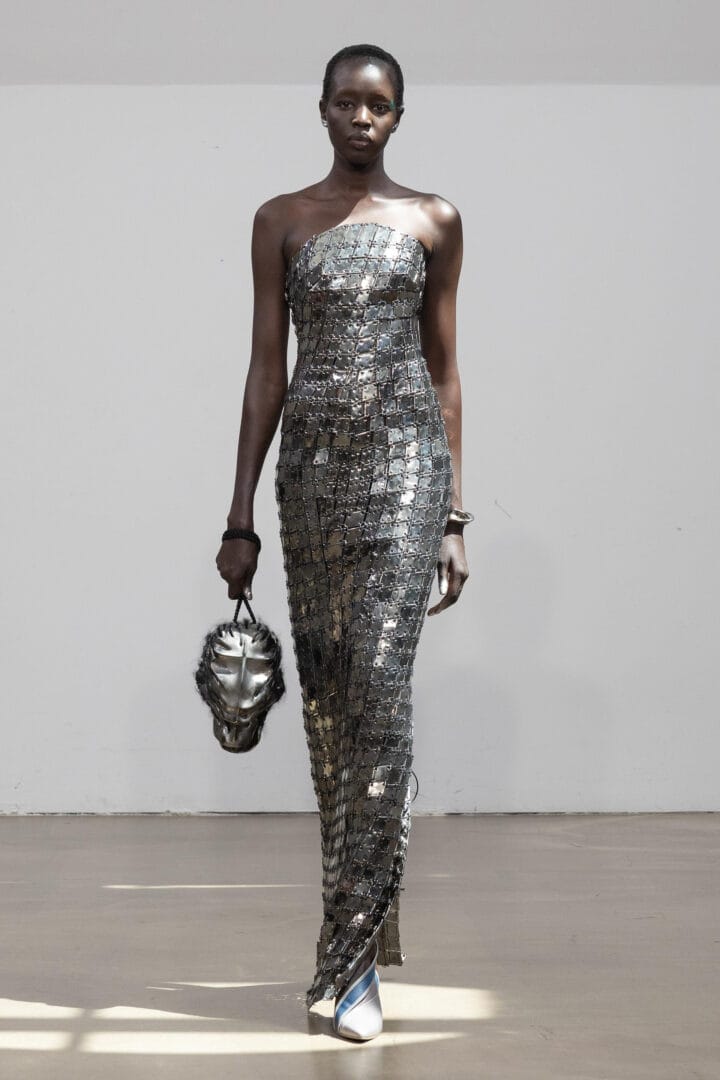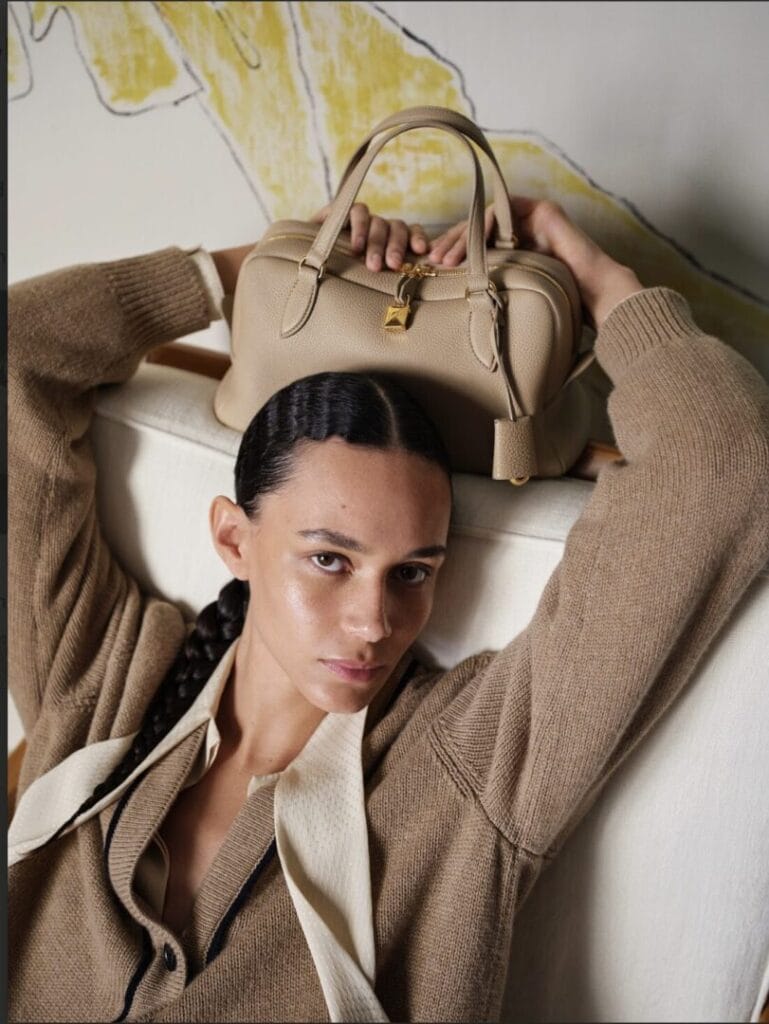Two weeks ago, the world’s most discerning eyes turned once again to Paris, where the Fall/Winter 2025–2026 Haute Couture shows unfolded with all the precision, poetry, and provocation that define this sacred corner of fashion. From July 7 to 10, the City of Light became a living atelier—its grand salons, palatial venues, and historic maisons hosting a season that was as much about legacy as it was about transformation.
At StyleLujo.com, we are proud to present our curated review of the season’s most compelling collections, moments, and creative voices. Our coverage goes beyond the front row and into the fabric of what makes couture matter now—especially in a global climate where craftsmanship, identity, and cultural storytelling are more vital than ever.
This season marked a turning point. Chanel celebrated 110 years of haute couture with a deeply intimate show at the Grand Palais’ Salon d’Honneur, recreating the mirrored salons of 31 rue Cambon. The studio team delivered a collection steeped in house codes—tweed, camellias, and wheat motifs—while Sofia Coppola’s accompanying book and podcast offered a cinematic lens into the maison’s enduring mystique.
At Balenciaga, Demna bid farewell with a hauntingly elegant final collection, while Kim Kardashian made a surprise runway appearance in a tribute to Elizabeth Taylor, wearing the icon’s own diamond earrings. Just hours later, Glenn Martens debuted his first couture collection for Maison Margiela, a deconstructed triumph that honored the house’s avant-garde DNA while signaling a bold new chapter3.
Schiaparelli opened the week with Daniel Roseberry’s surrealist spectacle—complete with a mechanical, rhinestone-encrusted heart that pulsed atop a crimson satin gown. Iris van Herpen stunned with a “living dress” embedded with bioluminescent algae, a feat of bio-design that blurred the line between couture and science5. Meanwhile, Rahul Mishra’s deeply spiritual collection, inspired by the seven stages of Sufi love, was a masterclass in Indian embroidery and emotional storytelling.
Other standouts included Elie Saab’s regal procession of moonlit florals, Ashi Studio’s decaying grandeur, and Robert Wun’s sculptural drama. Giorgio Armani Privé delivered a study in restrained opulence, while Viktor & Rolf and Rami Al Ali offered theatrical flourishes and architectural silhouettes. The venues themselves—from the Grand Palais to Villa Santo Sospir—became characters in their own right, each chosen to amplify the narrative power of the collections.
The front rows were equally dazzling. Cardi B, Dua Lipa, Keira Knightley, and Charlotte Casiraghi brought star power and style, while industry icons like Anna Wintour and Sofia Coppola lent gravitas to the proceedings. But beyond the celebrity flashbulbs, what resonated most was the return to intention. In a world increasingly driven by speed and spectacle, Paris reminded us that couture is still the ultimate expression of time, technique, and soul.
Stay tuned as StyleLujo.com rolls out in-depth reviews of each major house, exclusive interviews, and behind-the-scenes insights from the ateliers that continue to shape the future of fashion—one stitch at a time.
Rahul Mishra:


Rahul Mishra’s Becoming Love is not merely a couture collection—it is a spiritual journey rendered in silk, sequins, and soul. Presented at Paris Haute Couture Week, this deeply personal and poetic offering traverses the seven Sufi stages of love: from the first flicker of attraction to the final surrender of self. Mishra doesn’t just design garments—he composes verses in thread and light. Each look is a meditation on emotion, a tangible expression of the intangible. In a fashion world often preoccupied with spectacle, Mishra dares to undress the soul.
The silhouettes unfold like chapters in a love story. The early stages—dilkashi and uljhan—are soft and luminous, with heart motifs and pearl veils that barely graze the skin. As the narrative deepens, so does the palette and structure. Infatuation arrives in sculpted shoulders and intricate embroidery, while reverence and worship are expressed through high necklines, covered arms, and surreal headpieces by the legendary Stephen Jones. These garments are not just worn—they are inhabited. They carry the weight of longing, the grace of surrender, and the quiet devastation of love’s final transformation.
What elevates this collection beyond the poetic is its profound commitment to craft. Mishra’s atelier in India becomes a sanctuary of tradition and innovation, where nearly 2,000 artisans breathe life into each piece. Ancient techniques—zardozi, aari, naqshi—are reimagined with contemporary precision, creating surfaces that shimmer with memory and meaning. The influence of Gustav Klimt is felt in the gilded textures, while the sculptural forms are held together by metalwork honed by local craftspeople. This is couture that honors its roots while reaching for the divine.
In Becoming Love, Rahul Mishra offers more than fashion—he offers catharsis. It is a collection born of personal loss, yet it radiates universal truth. Love, in all its complexity, becomes the fabric of the collection itself. And in doing so, Mishra reminds us that couture can still be sacred. It can still move us. It can still mean something. This is not just his most personal work to date—it is his most profound.
ELIE SAAB:

In a season where couture is once again reclaiming its throne, ELIE SAAB’s La Nouvelle Cour arrives not as a whisper, but as a declaration. Presented in an intimate salon privé in Paris, the collection unfolds like a modern fairytale—one steeped in opulence, but sharpened by attitude. Saab’s Autumn/Winter 2025–2026 haute couture offering is a triumph of craftsmanship and character, a sumptuous homage to the unapologetically feminine woman who commands her world with elegance and edge. From the first look—silk sculpted into regal silhouettes, corsets ribbed in velvet and metallics, and gowns blooming with embroidered florals—it’s clear this is a collection that doesn’t just dress the muse, it defines her.
What makes La Nouvelle Cour so compelling is its ability to channel historical grandeur through a distinctly modern lens. The palette—macaron pastels offset by imperial black and gold—evokes the decadence of Versailles, yet never feels costume. Instead, Saab reimagines French corsetterie as a bold whisper of seduction, a structural embrace of strength and sensuality. The volumes are theatrical, yes, but never overwrought. Moiré sheaths, feathered gowns, and floor-grazing velvet capes move with a cinematic grace, each piece engineered to celebrate the body without overpowering it. The abundance of bows, sheer chiffons, and sculptural silhouettes are not mere embellishments—they are statements of intent.
In the context of today’s shifting cultural and political landscape—where a new conservatism is shaping both policy and aesthetics—Saab’s vision feels not only timely but necessary. As the fashion world pivots toward a renewed appreciation for polish, structure, and purpose, La Nouvelle Cour offers a blueprint for how to dress with conviction. This is couture that leans into power dressing without sacrificing romance. It’s a collection that understands the modern woman’s desire to be both commanding and captivating, to lead with grace and leave a lasting impression. In a post-minimalist moment, Saab’s maximalism feels like a breath of fresh air—rooted in tradition, but fearless in its execution.
And then, as midnight strikes, the bride appears—a queen among queens, cloaked in moonlit embroidery and crowned in a shimmering overskirt. It is a finale that doesn’t just close the show, but elevates it to legend. With La Nouvelle Cour, ELIE SAAB reminds us that couture is not just about fantasy—it’s about identity, legacy, and the enduring power of beauty when wielded with purpose. This is not nostalgia. This is a new court, and Saab is its sovereign.
YUIMA NAKAZATO

In a fashion landscape often dominated by surface spectacle, this season’s collection stands apart as a profound meditation on the very origins of clothing—and, by extension, the human condition. The designer’s message is not merely conceptual; it is visceral. Rooted in the primal need for protection, the collection traces the genesis of garments back to our earliest ancestors, who shielded themselves from the cold with animal skins as they migrated into harsher climates. This historical lens becomes the foundation for a deeply contemporary exploration of vulnerability, survival, and the evolving role of fashion in a world increasingly defined by exposure—both physical and digital.
The decision to shoot in the frozen expanse of Finnish Lapland, with contemporary dancer Evgeny Ganeev posing nude against a landscape of ice, is both poetic and provocative. It underscores the fragility of the human body in its most defenseless state, while simultaneously reaffirming the essential function of clothing as a form of protection. In an era marked by global unrest and technological overexposure, the image of the naked body against a frozen world becomes a powerful metaphor for our collective vulnerability. The garments that emerge from this narrative—ceramic dresses and masks, crocheted metal chains softened with mohair—are not just fashion objects. They are philosophical statements, fragile armors that challenge the very notion of what it means to be clothed, to be seen, to be safe.
The ceramic masks, in particular, resonate with haunting clarity. In a society increasingly surveilled and digitized, where facial recognition and AI-generated imagery blur the boundaries of identity, the act of concealing the face becomes a radical gesture. These masks, intentionally designed to fracture, mirror the fragility of the ice that inspired them. They are not shields of permanence, but symbols of impermanence—of beauty that breaks, of protection that is never absolute. The juxtaposition of hard materials with soft techniques—metal chains hand-knitted with mohair—further deepens the narrative. It’s a quiet rebellion, a tactile resistance to the speed and aggression of the modern world.
Ultimately, this collection is not about fashion in the conventional sense. It is about reawakening our understanding of clothing as a human necessity, a cultural artifact, and a deeply personal form of expression. It asks us to reconsider what we wear, why we wear it, and what it says about our place in a world that is both breathtakingly beautiful and brutally indifferent. In doing so, the designer offers not just garments, but a vision—one that is as intellectually rigorous as it is emotionally resonant. This is fashion as philosophy, and it demands to be felt as much as it is seen.
Ashi Studio:

Ashi Studio’s latest haute couture offering is not merely a collection—it is a cinematic meditation on memory, decay, and the enduring allure of craftsmanship. Set against the imagined backdrop of a world in chaos, the collection begins with a whisper of history: fragments of veils, tapestries, and illustrations unearthed from Parisian flea markets. These relics become the emotional scaffolding for a series of silhouettes that feel both ancient and startlingly modern. The woman who emerges from this narrative is not a muse, but a monument—her marbled face and draped form evoking the quiet grandeur of a forgotten era, reawakened through couture.
What makes this collection so compelling is its refusal to conform to the expected codes of beauty. Ashi abandons familiar techniques in favor of a layered, almost archaeological approach to design. The garments oscillate between splendor and erosion—corsets that shape and constrict, gowns that fall with the weight of history, and embellishments that feel as though they’ve been unearthed rather than sewn. There is a tactile tension at play: wood, mother-of-pearl, feathers, and lace are not just materials, but metaphors. Each element carries the weight of a larger story, one that speaks to the fragility of elegance and the resilience of artistry.
The references are rich and deliberate. Louise Bourgeois’ fabric works echo in the distressed textures and mended seams, while the spirit of a cabinet of curiosities lingers in the collection’s exoticism and classical restraint. There is a haunting beauty in the way Ashi explores transparency and concealment, animosity and intimacy. The garments do not simply adorn the body—they interrogate it, revealing and protecting in equal measure. This is couture that challenges the viewer to look deeper, to question what lies beneath the surface of beauty.
Ultimately, Ashi Studio’s collection is a masterclass in narrative couture. It is a world built from fragments, stitched together with reverence and rebellion. In an industry often preoccupied with immediacy, Ashi dares to slow the gaze, to mystify, to reach for something more exacting and profound. This is not fashion for the moment—it is fashion for the ages, and a testament to the enduring power of craft as a form of cultural memory.
There are collections that dress the body, and then there are collections that speak to the soul. When Nature and Love Take Over is firmly the latter—a poetic, deeply felt meditation on femininity, freedom, and the quiet power of emotional authenticity. This haute couture offering doesn’t shout; it breathes. It opens with a woman running toward nature, not in search of escape, but in pursuit of air, of clarity, of love. And in that pursuit, she finds herself—bare-shouldered in golden light, silk brushing against wildflowers, her heart beating in rhythm with the earth. This is couture not as spectacle, but as sensation.
The silhouettes are soft yet structured, nostalgic yet modern. Corsets, slips, and delicate underpinnings—once hidden—are reimagined as outerwear, worn with pride and grace. There is a reverence for the past, but no fear of it. Lingerie becomes a language of strength, and romance is no longer a fantasy—it’s a form of self-possession. The collection’s genius lies in its contrasts: masculine tailoring softened by fluid lines, tradition unraveled by beauty, structure undone by ease. Each piece feels like a whisper of memory, a garment that holds space for both vulnerability and resilience.
In a cultural moment increasingly defined by noise and spectacle, this collection offers a welcome reprieve. It reminds us that elegance can be quiet, that power can be gentle, and that love—when it takes over—can be the most radical force of all. The woman at the heart of this story does not chase time; she moves through it with intention. She lives fully, loves deeply, and lets the wind undo her hair without regret. She is not defined by where she is, but by how she feels. And in that, she becomes timeless.
When Nature and Love Take Over is more than a collection—it’s a state of being. It invites us to slow down, to feel more deeply, and to dress not just for the world, but for ourselves. In a season of shifting values and renewed introspection, this is couture at its most intimate and most inspiring.
JULIE DE LIBRAN:

There are collections that dress the body, and then there are collections that speak to the soul. When Nature and Love Take Over is firmly the latter—a poetic, deeply felt meditation on femininity, freedom, and the quiet power of emotional authenticity. This haute couture offering doesn’t shout; it breathes. It opens with a woman running toward nature, not in search of escape, but in pursuit of air, of clarity, of love. And in that pursuit, she finds herself—bare-shouldered in golden light, silk brushing against wildflowers, her heart beating in rhythm with the earth. This is couture not as spectacle, but as sensation.
The silhouettes are soft yet structured, nostalgic yet modern. Corsets, slips, and delicate underpinnings—once hidden—are reimagined as outerwear, worn with pride and grace. There is a reverence for the past, but no fear of it. Lingerie becomes a language of strength, and romance is no longer a fantasy—it’s a form of self-possession. The collection’s genius lies in its contrasts: masculine tailoring softened by fluid lines, tradition unraveled by beauty, structure undone by ease. Each piece feels like a whisper of memory, a garment that holds space for both vulnerability and resilience.
In a cultural moment increasingly defined by noise and spectacle, this collection offers a welcome reprieve. It reminds us that elegance can be quiet, that power can be gentle, and that love—when it takes over—can be the most radical force of all. The woman at the heart of this story does not chase time; she moves through it with intention. She lives fully, loves deeply, and lets the wind undo her hair without regret. She is not defined by where she is, but by how she feels. And in that, she becomes timeless.
When Nature and Love Take Over is more than a collection—it’s a state of being. It invites us to slow down, to feel more deeply, and to dress not just for the world, but for ourselves. In a season of shifting values and renewed introspection, this is couture at its most intimate and most inspiring.
Save Article








